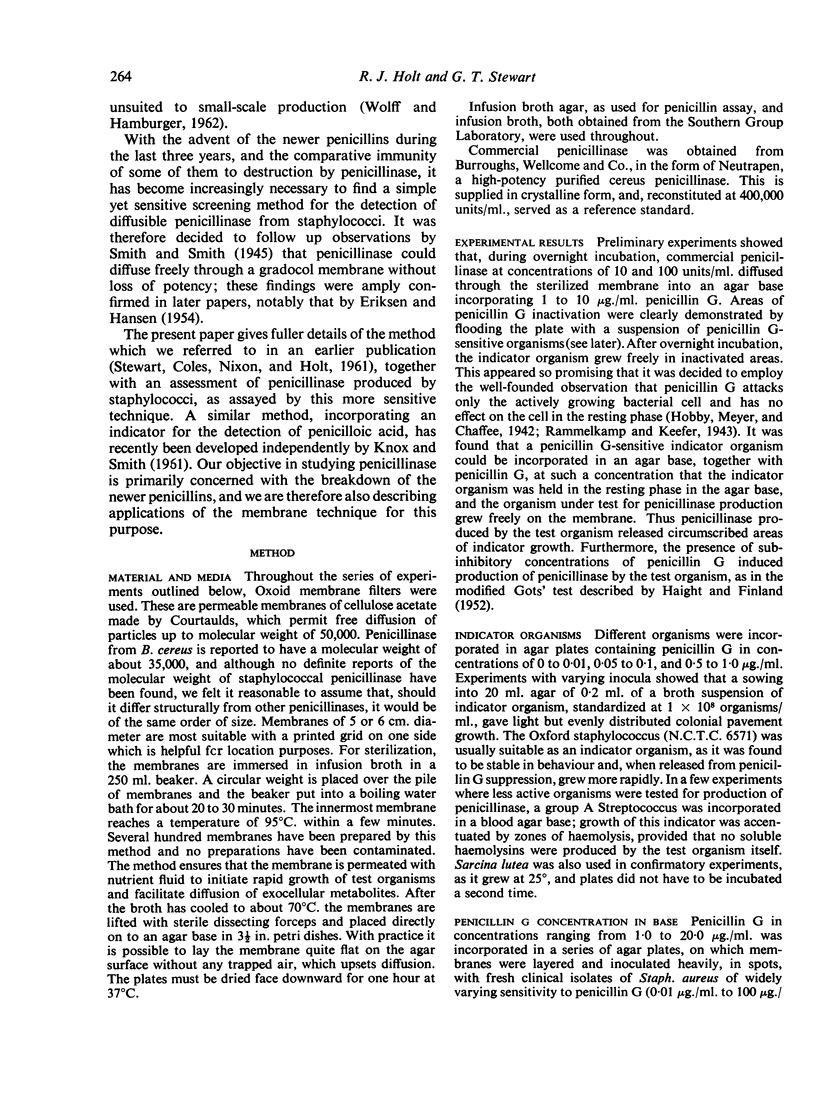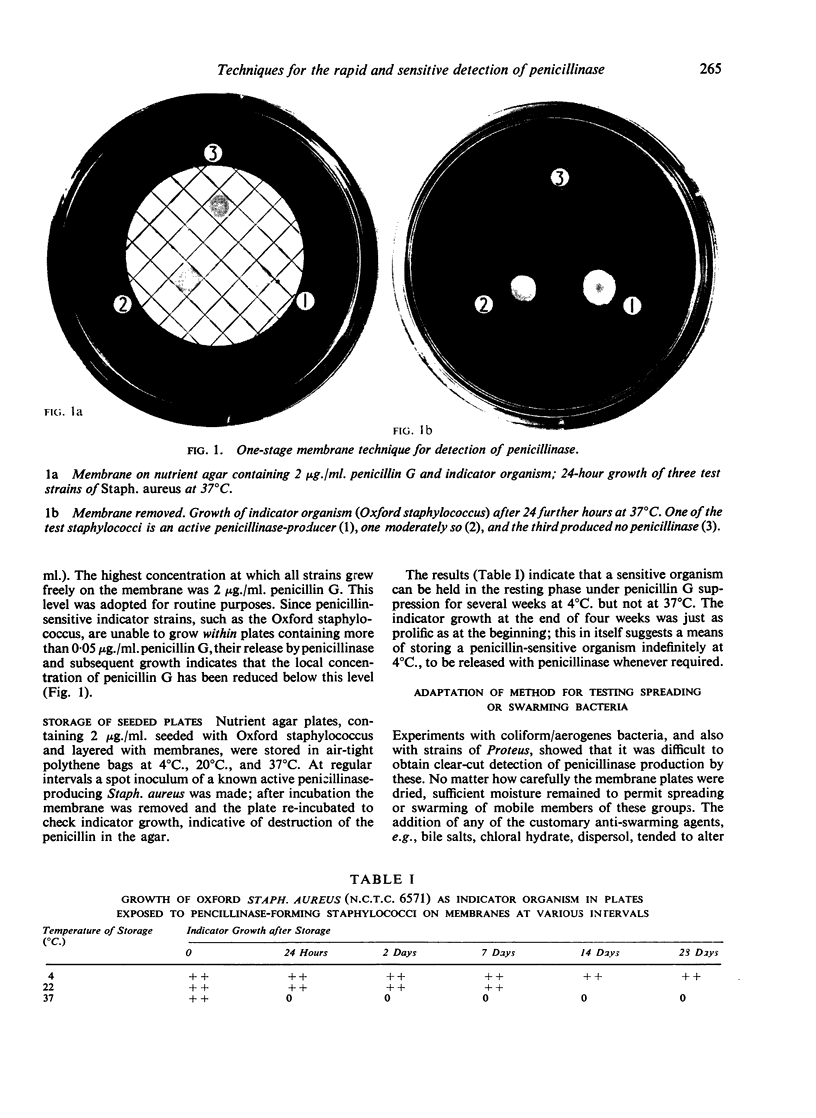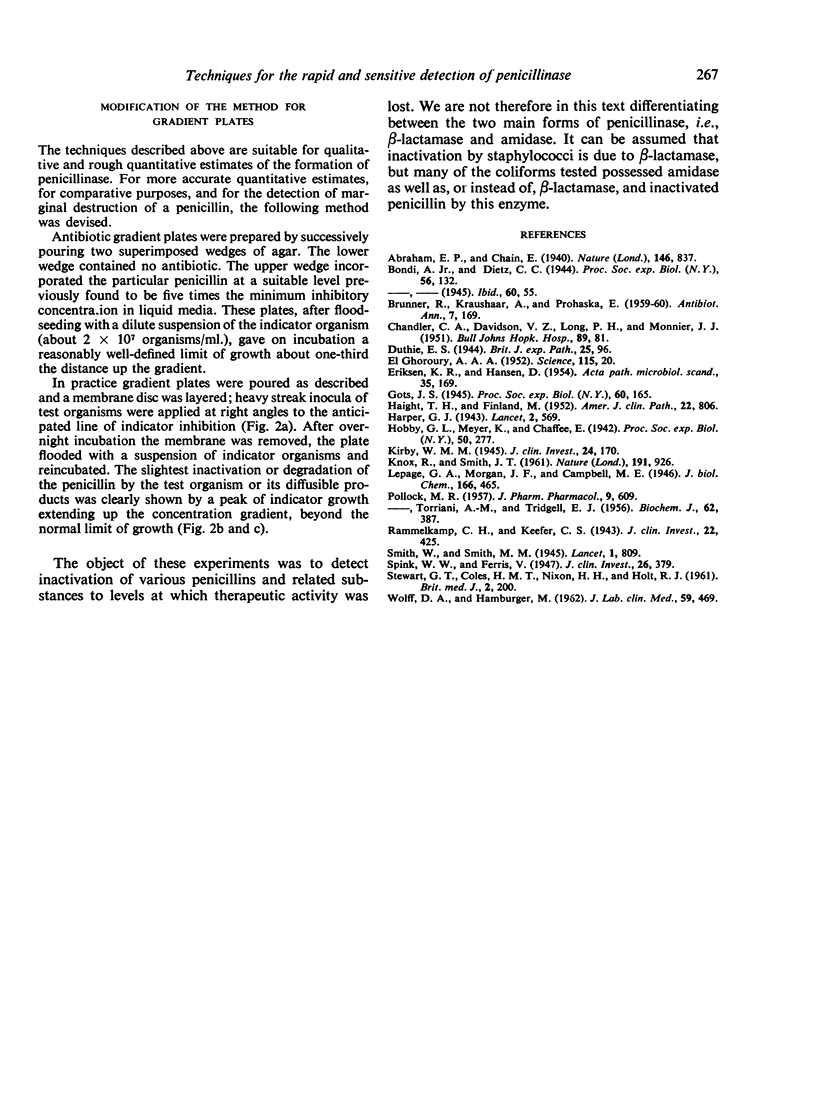Abstract
Practical problems in the detection of penicillinase are discussed. A membrane technique for this purpose is described, with various modifications, suitable for screening large numbers of organisms and yet more sensitive than most methods.
A one-stage membrane technique is adequate for detecting hydrolysis of penicillin G but a two-stage technique is required to demonstrate hydrolysis of some other penicillins. A gradient adaptation can be used for quantitative purposes.
Staphylococci, coliforms, Proteus, and other organisms can be tested in this way for penicillinase formation; the method is also suitable for testing lysates, filtrates, and dialysates, provided independent provision is made for enzyme inducement.
Full text
PDF




Images in this article
Selected References
These references are in PubMed. This may not be the complete list of references from this article.
- BRUNNER R., KRAUSHAAR A., PROHASKA E. Inhibition of penicillinase and reduction of resistance in vitro in staphylococci by surface-active substances. Antibiot Annu. 1959;7:169–174. [PubMed] [Google Scholar]
- CHANDLER C. A., DAVIDSON V. Z., LONG P. H., MONNIER J. J. Studies on resistance of staphylococci to penicillin: the production of penicillinase and its inhibition by the action of aureomycin. Bull Johns Hopkins Hosp. 1951 Aug;89(2):81–89. [PubMed] [Google Scholar]
- ERIKSEN K. R., HANSEN D. Observations on the extracellular nature of staphylococcal penicillinase. Acta Pathol Microbiol Scand. 1954;35(2):169–174. doi: 10.1111/j.1699-0463.1954.tb00858.x. [DOI] [PubMed] [Google Scholar]
- HAIGHT T. H., FINLAND M. Modified Gots test for penicillinase production. Am J Clin Pathol. 1952 Aug;22(8):806–808. doi: 10.1093/ajcp/22.8_ts.806. [DOI] [PubMed] [Google Scholar]
- KNOX R., SMITH J. T. Use of cellulose acetate membranes for detecting penicillinase-producing organisms. Nature. 1961 Aug 26;191:926–927. doi: 10.1038/191926a0. [DOI] [PubMed] [Google Scholar]
- Kirby W. M. PROPERTIES OF A PENICILLIN INACTIVATOR EXTRACTED FROM PENICILLIN-RESISTANT STAPHYLOCOCCI. J Clin Invest. 1945 Mar;24(2):170–174. doi: 10.1172/JCI101594. [DOI] [PMC free article] [PubMed] [Google Scholar]
- POLLOCK M. R. A simple method for the production of high titre penicillinase. J Pharm Pharmacol. 1957 Sep;9(9):609–611. doi: 10.1111/j.2042-7158.1957.tb12316.x. [DOI] [PubMed] [Google Scholar]
- Rammelkamp C. H., Keefer C. S. THE ABSORPTION, EXCRETION, AND DISTRIBUTION OF PENICILLIN. J Clin Invest. 1943 May;22(3):425–437. doi: 10.1172/JCI101412. [DOI] [PMC free article] [PubMed] [Google Scholar]
- Spink W. W., Ferris V. PENICILLIN-RESISTANT STAPHYLOCOCCI: MECHANISMS INVOLVED IN THE DEVELOPMENT OF RESISTANCE. J Clin Invest. 1947 May;26(3):379–393. doi: 10.1172/JCI101820. [DOI] [PMC free article] [PubMed] [Google Scholar]
- Stewart G. T., Coles H. M., Nixon H. H., Holt R. J. "Penbritin": An Oral Penicillin with Broad-spectrum Activity. Br Med J. 1961 Jul 22;2(5246):200–206. doi: 10.1136/bmj.2.5246.200. [DOI] [PMC free article] [PubMed] [Google Scholar]
- WOLFF D. A., HAMBURGER M. Evaluation of some currently used methods for determining staphylococcal penicillinase. J Lab Clin Med. 1962 Mar;59:469–480. [PubMed] [Google Scholar]





